
Five works from US composer often based in Amsterdam, Evan Johnson, in solo, duo and trio settings including a triptych titled "L'art de toucher" in three configurations, demonstrating his unique approach to writing using disparate musical influences from modern to Baroque, mated to anarchic experimentalism and a Wandelweiser sensibility; fascinating!
Out of Stock
Quantity in Basket: None
Log In to use our Wish List
Shipping Weight: 3.00 units
Sample The Album:
Evan Johnson-composer
Richard Craig-piccolo flute
Severine Ballon-cello
Susanne Peters-piccolo flute
Christian Dierstein-percussion
Nicolas Hodges-piano
Marcus Weiss-sopranino saxophone
Rei Watanabe-percussion
Sarah Saviet-violin
Click an artist name above to see in-stock items for that artist.
Label: Another Timbre
Catalog ID: at199
Squidco Product Code: 32719
Format: CD
Condition: New
Released: 2022
Country: UK
Packaging: Cardboard Gatefold
Track 1 recorded at Dai Hall, in Huddersfield, in November, 2021, by Simon Reynell.
Track 2 recorded at The Old School, in Starston, UK, in March, 2022, by Simon Reynell.
Track 4 recorded at Kammerstudio, SWR Stuttgrt, Germany, on November 24, 2021, by Stefanos Ioannou and Hendrik Rahn-Gunderoth.
Another Timbre Interview with Evan Johnson:
Tell us about your background in music.
I'm one of those people who has been composing for as long as I can remember. I don't think I still have my earliest childhood manuscripts but I kept them for a long time; I think my first piece was called "Rocky Road" and consisted of a shakily drawn series of whole notes done around the age of 4, around the time my father first sat me down at the family piano.
I'm not saying I was a prodigy or anything of the sort: I "composed" all through my childhood but mostly that meant filling music notebooks by writing "Sonata" or "Rondo" in big letters at the top of the page, followed by five or six bars of thoroughly incompetent pastiche of whatever I was learning to play on the piano at the time, and then giving up because I hadn't the faintest idea how to continue, because I was eight, or whatever.
It wasn't until my teenage years that I actually made things that could be called pieces and began to take seriously the idea that I could maybe do this for real, particularly when at age 16 I won a local young composers' competition and, as a result, had my first public performance. I studied composition at Yale-where I was, from day one, the designated weirdo, musically speaking, a position I relished and cultivated-and then got a PhD at the State University of New York at Buffalo, way up on the Canadian border, the former stomping grounds of Morton Feldman and an underappreciated mecca for experimental music.
My composition professor at Buffalo, David Felder, had the most finely honed bullshit meter of any composer I have ever met. He was and is a relatively conservative composer himself but for his students he had only one rule: you could do whatever you wanted, you could make work as crazy and impractical as you felt the need to, but you had to have the technical skill to pull it off and you had to be able to prove you had thought it through. I imagine it's thanks to him that I still place such emphasis on nuts-and-bolts contrapuntal and harmonic craft in my own work, veiled though it may be to anyone but myself much of the time.
Your scores are known for the very detailed, complex, and often very beautiful notation. When, how and why did this start?
These things are slippery targets, and they are all interrelated. It was around 2002 that I started writing much of my work by hand, just because I couldn't get-or couldn't be bothered to figure out how to get-the notation software that existed at the time to do what I wanted to do with various unconventional and detailed rhythmic structures.
For a while making scores by hand was mostly a pain, and I wasn't particularly good at it. But eventually I came to realize that this idiosyncratic way of doing things, this insistence on working manually, had certain aspects that could be taken advantage of: an ability to think of the compositional process in physical terms, in terms of really touching the material, drawing it, feeling its pacing and spacing in my body, and taking time with every individual notational element, every event, really thinking about what everything on the page was doing and whether it could be done differently, more meaningfully, more expressively, pushing the boundaries of a "standard" Western notational vocabulary. This is where a lot of the hypertrophied detail comes from: from the practice of writing by hand itself, not the other way around.
On the one hand, this is wildly inefficient. On the other hand, it has fundamentally shaped the way I think about what I'm doing, especially after decades of practice and honing of a notational style. I have come to believe more and more strongly in the importance of the score qua score, of writing qua writing, if one is going to engage in a notated musical practice. Why doesn't everyone take great pains over the way their scores look, if the score is where the center of gravity of the work is, the point at which the composer relinquishes absolute control? Why doesn't everyone realize that everything about a score speaks: the shape of the slurs, the layout of the page, the density or sparsity of the ink on the page, the different thicknesses of the various lines? It's absolutely fundamentally important to me that the scores look the way the performances sound, and I really think you can hear these things, even on record.
I sometimes think your music occupies a sort of impossible, hypothetical nexus between early music, complexity and Wandelweiser. How do you see it?
I think that is a better description than anything I could come up with!
Maybe where the chaotically disparate musical influences I feel-medieval music, the French Baroque, complexity and post-complexity, the anarchic experimentalism of Peter Ablinger, Antoine Beuger, Jo Kondo-come together is in a palpable attitude towards the compositional act: something like wonder.
It's an insistence on the sense of possibility inherent in things often taken for granted, like the fact of notation, the air and the sense of space shared in live performance, the microscopic timescale of ensemble interactions and instrumental techniques, the way instruments feel in the hand in all their concreteness, their weights and tensions; and maybe most of all on the value of things that are ambiguous, hidden, private, encoded, or otherwise not perfectly evident.
Notated composition, after all, is a bizarre and uniquely indirect art form, full of possibilities for misdirection, miscommunication, secrets, and overflow. These are traditionally papered over these days in a reflexive valorization of "clarity" and "efficiency" in composition and notation, but to me that misses the point. The music I treasure, of whatever sort (and this is as true of Mahler and Sibelius as of Ferneyhough and Louis Couperin and the ars subtilior) leaves ambiguities in its wake, and asks questions it doesn't answer. I'm not sure what the point is otherwise.
The fact is there's already way, way too much music in the world, and it is much too easily accessible. This is good for entertainment but a disaster for our sense of wonder. Nobody alive in the last couple of centuries, let alone today, will ever know the feeling of hearing, say, an Ockeghem mass in the fifteenth century, in the context of that life. It must have been something absolutely, unspeakably extraordinary, something inexpressibly transcendent. I think about this a lot. For me, at least, the only point in subjecting the world to more music now is if it can do something to recapture even a trace of what makes music special, which is precisely this shared air, these shared pressures, this concreteness, this state of exception.
Going on to the pieces on this CD, tell us about the 'L'art de toucher' triptych. What was the original impetus for this set of pieces, and how come 'L'art de toucher le clavecin, 1' was composed 12 years after 'l'art de toucher le clavecin, 2'?
The idea for this set of three "concentric" pieces dates back to an extended correspondence with Richard Craig in 2007-8 in which we tossed around various ideas about how the two of us could work together. Eventually we settled on an emerging project he had at the time with the marvelous Swedish violinist Karin Hellqvist and the percussionist Pontus Langendorf, who I'm sure is equally marvelous but with whom I never wound up working. Performance opportunities dictated that the duo for Richard and Karin, the "middle" piece, be written first. (They recorded the duo in 2011, in a version that feels very different to me from the one by Sarah and Susanne that is featured on the current CD)
As it happened, Pontus had to withdraw from the project; I made the trio out of the duo in 2011 for another ensemble, just to get it out into the world, but that plan fell through also. Thankfully, this orphaned piece was quickly picked up by ensemble mosaik and premiered in Cologne in 2012.
And then it was just a question of circumstance: I got busier, Richard got busier, opportunities for a small-scale piccolo solo proved as hard to come by as we probably should have expected, and so I got used to telling people who asked that yes, there was a "2" and a "3" in this series, but no "1" - until you finally provided the needed impetus, and the deadline, to get the solo written! So instead of the solo being the germ of the whole triptych, or spiral, or whatever it is, that role is taken by the duo; both the trio and the solo are versions of it.
More broadly speaking, the impetus-and the explanation for the title, taken from a treatise by François Couperin, inapplicable to these harpsichord-less pieces as it is-was the idea of music made of ornament. Each piece, and the set of three pieces taken as a whole, is made of layers of ornament upon ornament, flowering elaboration upon flowering elaboration upon flowering elaboration, of very simple, trivial musical figures, until they become something else altogether. The French Baroque harpsichord repertoire is some of my favorite music in all of history, precisely because of the way it is made out of fragile things that bloom from within cracks in edifices. That's what these pieces are about.
I've also asked that the three pieces not appear consecutively in performance-and in fact the trio is itself divided into three parts which, when it is performed without the others, are themselves to be split up among other things. One reason for this is that the three pieces are audibly based on the same basic simple figures, and I suspect that that insistence would become awfully fatiguing if the three pieces were heard in one twenty-eight-or-so-minute span. But it's a more general idea, too. I've done a similar thing with a couple of other pieces since, forming them into parts (movements? maybe.) that are to be played in order but non-consecutively. The aim is to establish a faint but palpable large-scale field of attraction, a thread that gets dropped and then gently taken back up. There is for me an air of tentative insistence, a gracious, decorous stubbornness, about these pieces, and the way they keep on coming back, the way the programme as a whole keeps circling around, amplifies and sustains that atmosphere.
Even though vocal music is often not my thing, I particularly like 'thaes ofereode, thisses swa maeg'. But what on earth does the title mean, and why? And why did you want this piece to be mixed at a significantly lowered level than the other pieces on the disc?
The title is tenth-century Old English. It's the recurring refrain of a poem called "Deor" that is basically an airing of professional grievances penned by a court poet who had fallen out of favour. He compares his plight to that of various historical and mythological figures, returning each time to this line, which is usually translated as something like "that [i.e. the misfortune just described] passed over, so will this." (The precise meaning and translation of this line, and of large swaths of the rest of the poem, is apparently a matter of some scholarly dispute; I guess this thousand-plus-year-old poem is very slowly fading into total obscurity.)
The soprano sings this phrase in pulverized form, again and again, eight times in total, alternating between a pair of quite similar little canonic settings (the subtitle is "eight lyrics for cello and soprano"), while the cello pursues an independent course of extremely detailed and privately demanding but even more extremely fragile canonic writing in the background, which is repetitive in its own unrelated way.
I've used early Englishes in several pieces, both "explicitly" as sung text and as a source of phonetic material for under-the-breath vocal layers in works for woodwinds. I am really attracted to the phonology and rhetoric of it-its penchant for rough and noisy consonants, its alliterative repetitiveness.
As for the question of quiet: all of my music of the past fifteen years or so is very quiet a lot of the time, and a lot of it is very quiet all of the time. But this one is one of a few pieces of mine that is meant to be, in live performance, quite exceptionally quiet even by my own standards, quite exceptionally distant: in particular, most of the cello part, when heard in a concert hall, should be almost impalpable, a sort of barely perceptible buzzing in the air, while the singer attempts (and of course fails) to match that extremity. That sort of thing naturally can't happen on record, so the combination of extreme distance and extreme intimacy had to be suggested in other ways. And even then-and not for the first time with me, far from it!-hearing the piece on CD is not like hearing it live; it is not a different piece, but it certainly presents the piece in a very different light.
And 'Plan and section of the same reservoir': Although the title for this one is in English, it remains something of a puzzle. Can you explain it? Have you written any other pieces involving saxophone? I somehow don't think of it as a likely instrument for your music.
It is indeed something of a puzzle! (I like titles that are hard to explain.) It's a catalogue designation given to an architectural etching by Giovanni Battista Piranesi - see image opposite - that in itself isn't particularly interesting: it is what it says it is, a vertical and horizontal cross-section of a nondescript ancient reservoir in Castel Gandolfo, near Rome.
But aside from the fact that I just liked the phrase, the rhythm and sound of it, and I like Piranesi, there is something to it that has something to do with the piece: it's something about the revisiting of a solid center from various orthogonal angles, revealing various faces, various proportions, and so forth. Insofar as there is a connection to the specific construction of the piece, it is very abstract indeed: except maybe for that word "same", the emphasis on the fact of return, of obsessive redescription, of hovering around something just beyond reach that cannot be depicted all at once.
The saxophone is actually an instrument that really appeals to me, unlikely though it may seem at first. I've written a lot of music for clarinet, and the saxophone works broadly similarly; if anything, it's capable of even more flexibility of intonation and articulation, especially at low dynamics. I wrote a prominent, almost soloistic part for baritone saxophone in an ensemble piece in 2012 and a solo for that same instrument two years later (both for the spectacularly talented American saxophonist Ryan Muncy, whose very premature death earlier this year was a profound loss for American new music). As it happens, I'm supposed to be doing another saxophone piece next year, with guitar this time. And Marcus Weiss, of Trio Accanto, is-I think it's fair to say-the best saxophonist in the world for music like this.
Frankly, it's the piano in this piece that felt more foreign. As it happens, this piece is the one where I feel like I first found my way towards a long-term way of working with the piano that felt true to what my instrumental writing is all about. My way of thinking about instruments is so strongly oriented towards the microscopic and the physical that I've never been comfortable with the piano's black-box quality, the way that once you depress a key there's not really much more to be done. I've struggled with it in various ways since I was a student. In "Plan and section", for the first time, I was really happy with this language of stuttering and stumbling phrases, of half-depressed attacks, that I've developed since into something that I'm really happy with. If you had told me a decade ago that I'd find the piano to be one of the most congenial instruments for my way of thinking, I'd have given you a very strange look. But here we are.
Artist Biographies
• Show Bio for Evan Johnson "Evan Johnson [b. 1980] is an American composer whose music focuses on extremes of density and of reticence, of difficulty and of sparsity, and on hiding itself. His music has been performed throughout North America, Europe and beyond by leading ensembles such as Musikfabrik, ELISION, the BBC Scottish Symphony Orchestra, Trio Accanto, the International Contemporary Ensemble, the Riot Ensemble, EXAUDI, and many others, as well as a wide variety of international soloists. His work has been programmed at many international festivals of contemporary music, including the Lucerne Festival, Darmstadt Summer Courses, Wittener Tage für neue Kammermusik, Huddersfield Contemporary Music Festival, Milano Musica, Ultraschall (Berlin), TRANSIT (Leuven), Gaudeamus Muziekweek (Utrecht), Klangwerkstatt Berlin, London Contemporary Music Festival, Bludenzer Tage zeitgemäße Musik, and others, featured on the Monday Evening Concerts series in Los Angeles, and heard at such venues as Miller Theatre (New York) and London's Wigmore Hall. Portrait discs are available on Kairos, all that dust, and Another Timbre, with others forthcoming; recordings of individual works are available on HCR, Metier, New Focus, Label Musikfabrik, and Wergo. Selected scores are published by Edition Gravis (Berlin). Also active as a writer on contemporary music, Johnson has contributed to Tempo, Contemporary Music Review, MusikTexte, Music Theory Spectrum, GroveMusic Online, and NewMusicBox, and provided booklet essays for discs on the Mode, NEOS, NMC, Metier, and Kairos labels with music by Peter Ablinger, Joanna Bailie, Aaron Cassidy, Einar Torfi Einarsson, Andrew Greenwald, and James Weeks. He holds degrees in composition from SUNY Buffalo and Yale University, and has lectured widely on his own work and taught composition, analysis and orchestration at SUNY Buffalo, Northeastern University, and Harvard. He lives in Amsterdam and in Arlington, Massachusetts, with his wife and two small children." ^ Hide Bio for Evan Johnson • Show Bio for Richard Craig "Richard Craig was born in Glasgow and studied flute at the Royal Scottish Academy of Music and Drama with Richard Blake and Sheena Gordon. Graduating in 2003 with a degree and solo diploma, he continued his studies (supported by the Scottish International Educational Trust and a Dewar Arts award) at the Conservatoire National de Region Strasbourg with Mario Caroli and Claire Gentilhomme. In 2006 he received a "diplôme de spécialisation" from the CNR de Strasbourg, achieving 'unanimité du jury'. During this time Richard also received guidance from Pierre-Yves Artaud. He now has a burgeoning international career performing with many of the world's finest groups and musicians. Persistently challenging our perceptions of the instrument and new music, Richard Craig has developed a technique and repertoire that has attracted widespread acclaim as a musician and programmer, and it is this which defines his work: a resistance to be cornered by expectations, trends or traditional hierarchies. As a soloist, chamber musician and lecturer, Richard has worked with composers such as Brian Ferneyhough, Beat Furrer, James Dillon, Salvatore Sciarrino, Kaija Saariaho, Richard Barrett, Helmut Lachenmann and musicians such as Emilio Pomarico, Enno Poppe, Stefan Asbury, Pierre-Yves Artaud, Roberto Fabbriciani and Rohan de Saram. More recently, Richard has worked as an improviser with performers such as Johan Zakrisson, David Stackenäs and later in 2010, Barry Guy. He also maintains close contact with new music groups musikFabrik Cologne, Klangforum Wien, KammarensembleN Stockholm and the Hebrides Ensemble performing with them in festivals throughout Europe: Venice Biennale, Festival d'Automne, UltraSchall, Maerzmusik, the St. Magnus Festival, Wittener Musiktage. Richard is a regular member of C.C.P Stockholm and SMASH Salamanca. Broadcasts include WDR Cologne, YLE Finland, Radio France, Radio Nacional de España, Swedish Radio, ARTE, and Icelandic RUV. His solo disc, INWARD, is on general release through Metiér, featuring works by Ferneyhough, Barrett, Croft, Bång and Karski, among others. Richard is also a laureate of numerous international competitions: Grand Prix and a Primo Speciale (for his performance of works by Sciarrino) from the XIth and XIIth L'Accademia Concordia Concorso Internazionale di Interpretazione di Musica Contemporanea, Italy and 'prix du jury' from the XIVth Penderecki international chamber music competition, Poland. As a pedagogue he has given classes and workshops to musicians around the world (Columbia University, New York, CNR Strasbourg, France, Cork University, Ireland, Leeds University, Aberdeen University, Huddersfield and Napier University Edinburgh), an activity that he sees as vital to the music of our time. As of 2010, Richard will be Visiting Lecturer in Performance at the University of Aberdeen. He has also been awarded an arbetesstipendium from the Swedish Arts Grant Authority for 2009/10 in recognition for his work in contemporary music." ^ Hide Bio for Richard Craig • Show Bio for Severine Ballon "Séverine Ballon's work focuses on regular performance of key works of the cello repertoire, as well as numerous collaborations with composers; in addition, her researches as an improviser have helped her to extend the sonic and technical resources of her instrument. She studied the cello at the Hochschule für Musik in Berlin and in Lübeck with Joseph Schwab and Troels Svane. In 2004-2005 she was 'academist' at the Ensemble Modern (Internationale Ensemble Modern Akademie). She perfected her contemporary cello technique with cellists Siegfried Palm, Pierre Strauch and Rohan de Saram. In 2005-2006 she was solo cellist of the Toulouse Chamber Orchestra, but subsequently decided to concentrate on contemporary music and on the premiere of new works. Currently she is working on developing extended techniques for her instrument and finding an appropriate notation. Séverine Ballon particularly enjoys working with contemporary composers and has worked with Helmut Lachenmann, Chaya Czernowin, Rebecca Saunders and Liza Lim. She has premiered a number of solo works which have been written especially for her, including those from Rebecca Saunders, Mauro Lanza and Franck Bedrossian. She has also worked with many of the best known contemporary music ensembles including Klangforum Wien, musikFabrik, Ensemble Intercontemporain and Ictus. She is a member of the Elision ensemble (Australia). Séverine Ballon gives masterclasses for composers at Harvard University, Stanford University, the Hochschule für Musik in Stuttgart, at the University of Huddersfield, the University of California Berkeley, and at the Tzlil Meudcan composition course (Israel)... In 2008-2009 she was resident artist at the Akademie Schloss Solitude in Stuttgart. Thanks to the Harvard French Scholarship Fund and an Arthur Sachs grant she will be a fellow at Harvard University during academic year 2014-2015. 2016-2017 she was a 'visiting artist at CCRMA/Stanford University She composed and interpreted the original music of the long feature movie 'the ornithologist' by Joao Pedro Rodrigues (2016)" ^ Hide Bio for Severine Ballon • Show Bio for Susanne Peters "Susanne Peters (b. 1988, Saarbrücken, Germany) is a flutist dedicated to the performance of contemporary music. Susanne earned her Bachelor's degree at the Royal Conservatoire of The Hague, The Netherlands, where she studied with Kersten McCall and was a member of the ASKO/Schönberg Ensemble's Ligeti Academy. She continued her studies with Pirmin Grehl at the Hochschule Luzern, receiving a Master's degree with distinction in contemporary music performance. Susanne has been involved with contemporary music on a professional level since the beginning of her studies in The Netherlands, most notably with with the ASKO/Schönberg Ensemble and in the Royal Concertgebouw Orchestra's AAA series. Since moving to Luzern she has performed in the Lucerne Festival and with the Luzern Festival Academy, plays regularly with Ensemble Contrechamps, Geneva, and Ensemble Proton, Bern. She is a member of Collegium Novum, Zürich, and is a founding member of Oerknal!, a new music ensemble based in The Netherlands. She has worked closely with composers Beat Furrer, Hans Zender, Heinz Holliger, Isabel Mundry, Jason Eckardt, Lewis Nielson, Chaya Czernowin, Bernhard Lang, Dieter Ammann, Simon Steen-Andersen, Kyle Bartlett, Reiko Füting, among others. Susanne is active in several chamber groups and has a particular passion for introducing younger audiences to the world of contemporary music. She was able to develop her orchestral skills in the Luzerner Sinfonieorchester Akademie during the 2013/14 season. Susanne currently lives between Luzern and Amsterdam." ^ Hide Bio for Susanne Peters • Show Bio for Christian Dierstein "Christian Dierstein has established himself among the most interesting performers in the contempory music of our time.He studied under Bernhard Wulff at the Freiburg Musikhochschule and under Gaston Sylvestre in Paris.Heis the winner of numerous competitions and received scholarships from the Studienstiftung des deutschen Volkes and the Akademie Schloß Solitude ,Stuttgart. He is the percussionist of the ensemble recherche since 1988. Together with Marcus Weiss and Nic Hodges he forms the trio accanto.In addition to his performances of new music ,he has focused on non-European music and free improvisation. He has given solo concerts throughout Europe. In the season 2010/11 he was one of the "Rising Stars" from the European Concert Hall Organisation.Important appearances include:Amsterdam Concertgebouw, Athens ,Berliner Festspiele,Brussel Festival,Donaueschinger Musiktage,Huddersfield Festival,Lucerne Festival,Monday evening concerts Los Angeles,Rachmaninov Hall Moskau,Festival d'Autome Paris,Ircam Paris, Rome,Salzburg Festival,Schleswig Holstein Festival,Suntory Hall Tokyo,Wien Modern,Wittener Tage für neue Kammermusik,Zürich Festival für neue Musik and others. He has recorded for several labels including Kairos,col legno,Stradivarius, Winter & Winter,neon and his recordings have been the recipients of numerous awards. Christian Dierstein works together regulary with several of the greatest living composers,figures such as Hans Abrahamsen,Beat Furrer, Hugues Dufourt, Helmut Lachenmann,Rebecca Saunders, Salvatore Sciarrino. Since 2001 he is Professor for percussion and new chamber music at the Hochschule für Musik in Basel, Switzerland. He gave masterclasses in Buenos Aires,Berlin,Chicago,Los Angeles,Genf, Madrid,Moskau,New York,Oslo,Peking,Valencia,Tiflis and others.Since 2008 he is one of the percussion tutor of the Darmstädter summer courses , since 2011 he is the percussion tutor of the Impuls academy in Graz ,since 2014 regular guest teacher in Madrid and 2017 tutor of the Luzern academy." ^ Hide Bio for Christian Dierstein • Show Bio for Nicolas Hodges "An active and ever-growing repertoire that encompasses such composers as Beethoven, Berg, Brahms, Debussy, Schubert and Stravinsky reinforces pianist Nicolas Hodges' superior prowess in contemporary music. As Tempo magazine has written: "Hodges is a refreshing artist; he plays the classics as if they were written yesterday, and what was written yesterday as if it were already a classic." Born in London and now based in Germany, where he is a professor at the Musikhochschule Stuttgart, Hodges approaches the works of Classical, Romantic, 20th century and contemporary composers with the same questing spirit, leading the Guardian to comment: "Hodges' recitals always boldly go where few other pianists dare... with an energy that sometimes defies belief." Nicolas Hodges' virtuosity and innate musicianship give him an assured command over the most strenuous technical complexities, making him a firm favourite among many of today's most prestigious contemporary composers. Collaborating closely with such contrasting figures as John Adams, Helmut Lachenmann and the late Karlheinz Stockhausen is central to Hodges' career, and many of the world's most revered composers have dedicated works to him, including Thomas Adès, Gerald Barry, Elliott Carter, James Clarke, Francisco Coll, Hugues Dufourt, Pascal Dusapin, Beat Furrer, Isabel Mundry, Brice Pauset, Wolfgang Rihm and Miroslav Srnka. Hodges enjoys a particularly close relationship with Sir Harrison Birtwistle, who recently described him as "becoming like my Peter Pears." In September 2018, it was announced that the eminent composer, and long-term collaborator of Nicolas Hodges, Rebecca Saunders, had been selected by Roche Commissions as the 10th recipient in their commissioning series. The new commission, a piano concerto for Hodges, will be premiered at the Lucerne Festival, by Hodges and the Lucerne Festival Academy Orchestra, in late August 2020, and will subsequently be toured in Europe. Recent performance highlights for Nicolas Hodges have included the premiere of Simon Steen-Andersen's award-winning Piano Concerto, performed with Francois-Xavier Roth and the SWR Symphony Orchestra Freiburg Baden-Baden as part of the Donaueschingen Festival in 2014, as well as the world premiere of Variations from the Golden Mountains by Sir Harrison Birtwistle at London's Wigmore Hall. Hodges also recently gave the world premiere of Gerald Barry's Piano Concerto, with the Bavarian Radio Symphony Orchestra and Peter Rundel, and the UK premiere with the City of Birmingham Symphony Orchestra and Thomas Adès in Birmingham, followed by a repeat performance at the Aldeburgh Festival. He also gave the world premiere of Thomas Adès' own piano concerto In Seven Days with the London Sinfonietta, followed by further performances of the work with orchestras including the London Symphony Orchestra, Los Angeles Philharmonic Orchestra and Chamber Orchestra of Europe. Further performance highlights for Hodges have included the world premiere performance of Elliott Carter's Dialogues for piano and orchestra, with the London Sinfonietta and Oliver Knussen, as well as the US and Berlin premieres of the work, with the Chicago Symphony and Berlin Philharmonic orchestras respectively - both conducted by Daniel Barenboim - and the New York premiere, at Carnegie Hall, with the MET Orchestra. Hodges's has established successful relationships with many of today's leading orchestras and ensembles, and engagements include regular performances with orchestras such as the BBC Symphony, Boston Symphony, City of Birmingham Symphony Orchestra, hr-Sinfonieorchester Frankfurt, London Philharmonic, Los Angeles Philharmonic, Melbourne Symphony, MET Orchestra, New York Philharmonic, Orchestre Philharmonique de Luxembourg, Philharmonia Orchestra, San Francisco Symphony, Symphonieorchester des Bayerischen Rundfunks, St Louis Symphony, Sydney Symphony Orchestra, Tokyo Philharmonic, Tonhalle Orchestra Zurich and WDR Sinfonieorchester Cologne, and ensembles such as ASKO/Schoenberg, Amsterdam, Birmingham Contemporary Music Group, Contrechamps Geneva, International Contemporary Ensemble New York and the Remix Ensemble, Porto. Among the distinguished conductors with whom Nicolas Hodges regularly collaborates are Thomas Adès, Daniel Barenboim, George Benjamin, Martyn Brabbins, Sylvain Cambreling, James Levine, Susanna Mälkki, Cornelius Meister, Jonathan Nott, Emilio Pomarico, David Robertson, Pascal Rophé, François- Xavier Roth, Peter Rundel, Jukka-Pekka Saraste, Pierre-André Valade, Ilan Volkov and Ryan Wigglesworth. Also an avid chamber musician, Hodges has performed in Berlin (Musikfest), Brussels (Ars Musica), Hamburg (Ostertoene), Helsinki (Musica Nova), London (Barbican Centre, Wigmore Hall, Southbank Centre and the BBC Proms), Lucerne (Festival), Madrid (INAEM), Melbourne International Arts Festival, New York (Carnegie Hall and Mostly Mozart), Paris (IRCAM and Festival d' Automne), Rome (IUC), Salzburg (Festival and Biennale), Strasbourg (Musica), Stuttgart (Eclat), Tanglewood (Festival), Tokyo, Vienna (Wien Modern) and Zurich (Tage für Neue Musik). He also collaborates regularly with the Arditti Quartet, Adrian Brendel, Colin Currie, Ilya Gringolts, Anssi Karttunen, Michael Wendeberg, Carolin Widmann and has been a member of Trio Accanto since 2013. Nicolas Hodges' varied discography includes Thomas Adès' piano concerto In Seven Days, with the London Sinfonietta and Thomas Adès (Signum Classics); two discs of works by Harrison Birtwistle; and a live recording of Luca Francesconi's piano concerto with the Orquestra Sinfónica Casa da Musica. On the Wergo label, Hodges has recorded "Voces Abandonadas", comprising works by Walter Zimmermann; a disc of works by Brice Pauset entitled "Canons for solo piano"; and "Songs and Poems", which includes repertoire by Hans Thomalla, Walter Zimmermann and Wolfgang Rihm with Trio Accanto." ^ Hide Bio for Nicolas Hodges • Show Bio for Marcus Weiss "Marcus Weiss is one of the leading international "classical" saxophone players. His repertoire includes all epochs of the instrument's short history, from the beginnings in impressionistic France to the present. He is passionate about establishing the saxophone as a solo instrument in today's classical music world. He has played a crucial role in increasing the repertoire for the saxophone with numerous premieres of new works. Besides many others, the following contemporary composers have written solo and chamber works for him: Peter Ablinger, Georges Aperghis, Vykintas Baltakas, John Cage, Aldo Clementi, Péter Eötvös, Beat Furrer, Michael Finnissy, Stefano Gervasoni, Vinko Globokar, Erhard Grosskopf, Manuel Hidalgo, Toshio Hosokawa, Thomas Kessler, Hanspeter Kyburz, Jô Kôndô, Yu Kuwabara, Helmut Lachenmann, Roland Moser, Giorgio Netti, Brice Pauset, Stefan Prins, Wolfgang Rihm, Rebecca Saunders, Salvatore Sciarrino, Elliott Sharp, Mauricio Sotelo, Johannes Maria Staud, Karlheinz Stockhausen, Hans Thomalla, Nadir Vassena, Christian Wolff, Walter Zimmermann... As a soloist, Marcus Weiss worked with many European orchestras and ensembles including, Ensemble Modern, Musik-Fabrik, Deutsche Kammerphilharmonie, Scottish Symphony Orchestra, WDR Symphonieorchester, Orchestra Sinfonica do Porto, Chamber Orchestra of Europe, Berliner Symphonie-Orchester, Klangforum Wien, Vienna Symphony Orchestra, Bayerischer Rundfunk, Ensemble Contrechamps, ensemble recherche and others. He has been invited to festivals such as Wien Modern, Wittener Tage für Neue Kammermusik, Donaueschinger Tage für Neue Musik, Festival d'Automne de Paris, Märzmusik Berlin, Biennale Munich, Tage für Neue Musik Zürich, Salzburger Festspiele, Edinburg Festival, Eclat in Stuttgart, Darmstädter Ferienkurse, Warschauer Herbst and to festivals in Austria, France, Italy, Spain, England, Russia, Poland, Ukraine, USA and Japan. Marcus Weiss is a dedicated chamber musician, primarily working with his two ensembles, the TRIO ACCANTO with Nicolas Hodges (piano) and Christian Dierstein (percussion), as well as with the saxophone ensemble XASAX, a saxophone quartet that he forms together with three colleagues in Paris. Trio Accanto is one of the most featured new music chamber groups of the last two decades and has first performed more than a hundred works. - The repertoire of XASAX includes not only contemporary music, but also early renaissance works and music from other epochs. In this connection, the cooperating with italian composer Salvatore Sciarrino has proved extremely inspiring for XASAX. Bach and also the music of Leos Janacek have been in the center of their latest projects. Marcus Weiss is teaching saxophone and chamber music at the University of Music Basel (Hochschule), where he is also in charge of contemporary music. He is giving masterclasses at various international universities including Royal Academy of Music London, Universidad de Alcala Madrid, Universität der Künste in Berlin, CNSM de Paris, Universität für Musik in Wien, a number of universities in the USA, including in Boston, New York, Chicago, but also in Russia. He is a regular teacher at the "Darmstädter Ferienkurse für neue Musik" as well as at IMPULS (ensemble academy) in Graz (Austria). Together with italian composer Giorgio Netti he wrote The Techniques of Saxophone Playing (Kassel, Germany: Bärenreiter, 2010). Marcus Weiss was born in 1961 in Basel, Switzerland. He studied with Iwan Roth at the Hochschule für Musik Basel and Frederick L. Hemke at Northwestern University, Chicago." ^ Hide Bio for Marcus Weiss • Show Bio for Sarah Saviet "Sarah Saviet is a violinist based in Berlin and dedicated to the performance of contemporary music. She performs as a soloist and chamber musician and is a member of the Saviet/Houston Duo and Riot Ensemble. Sarah's recent recording of Liza Lim's violin concerto 'Speak, Be Silent,' with the Riot Ensemble was selected as one of New Yorker Magazine's 'Best recordings of 2019.' Recent performances include soloist with Klangforum Wien as part of Märzmusik in the Berliner Philharmonie, and the premiere of Rebecca Saunders and Enno Poppe's duo Taste at Witten Festival 2022. Sarah has held visiting artist positions in the composition departments of the University of the Arts Berlin, Huddersfield University, at Goldsmith University London with the Riot Ensemble, and at Harvard University with ELISION Ensemble. She has given workshops on contemporary violin technique at the Manhattan School of Music University of the Arts Berlin, Manhattan School of Music, and Darmstadt Akademie für Tonkunst, and held artist residencies at Aldeburgh Music with composers Lawrence Dunn, Jack Sheen, and artist Rowland Hill. Recent appearances include solo performances at Moderne Muziek Nijmegen, Splendor Amsterdam, City University London, Cologne's KGNM Musikfest. Other recent performances include Ultraschall Festival with Nicolas Hodges, Lucas Fels, and Nina Janßen-Deinzer; Schwetzingen Festival with Anssi Kartunnen, Nicholas Hodges, and Claudia Barainsky in several concerts highlighting the music of Kaija Saariaho; and the Aldeburgh Music Festival as concertmaster of the BPO under Oliver Knussen. Sarah performs frequently in festivals such as Huddersfield Contemporary Music Festival, Donaueschinger Musiktage, Gaudeamus Muziekweek, Acht Brücken Köln, COMA Festival England, Amsterdam String Quartet Biennale, Lucerne Festival, and Dark Music Days in Iceland. Sarah curates a concert series at km28 in Neukölln, Berlin. She performs regularly with with ensembles such as Ensemble Mosaik, Ensemble Modern, Musikfabrik, ELISION, and orchestras including the Berlin Philharmonic, Staatskapelle Berlin, Rundfunk Sinfonie Berlin, WDR Sinfonieorchester, and Konzerthaus Berlin. She studied at Indiana University with Jorja Fleezanis and Mauricio Fuks, and at the University of the Arts Berlin with Nora Chastain, supported by a DAAD grant." ^ Hide Bio for Sarah Saviet
7/7/2025
Have a better biography or biography source? Please Contact Us so that we can update this biography.
7/7/2025
Have a better biography or biography source? Please Contact Us so that we can update this biography.
7/7/2025
Have a better biography or biography source? Please Contact Us so that we can update this biography.
7/7/2025
Have a better biography or biography source? Please Contact Us so that we can update this biography.
7/7/2025
Have a better biography or biography source? Please Contact Us so that we can update this biography.
7/7/2025
Have a better biography or biography source? Please Contact Us so that we can update this biography.
7/7/2025
Have a better biography or biography source? Please Contact Us so that we can update this biography.
7/7/2025
Have a better biography or biography source? Please Contact Us so that we can update this biography.
Track Listing:
1. L' Art De Toucher Le Clavecin 5:19
2. Thaes Ofereode, Thisses Swa Maeg 7:18
3. L' Art De Toucher Le Clavecin 2 9:44
4. Plan And Section Of The Same Reservoir 18:17
5. L' Art De Toucher Le Clavecin 3 14:08
Compositional Forms
Solo Artist Recordings
Duo Recordings
Trio Recordings
Woodwinds
Piano & Keyboards
Recordings by or featuring Reed & Wind Players
Unusual Vocal Forms
Percussion & Drums
New in Compositional Music
Search for other titles on the label:
Another Timbre.


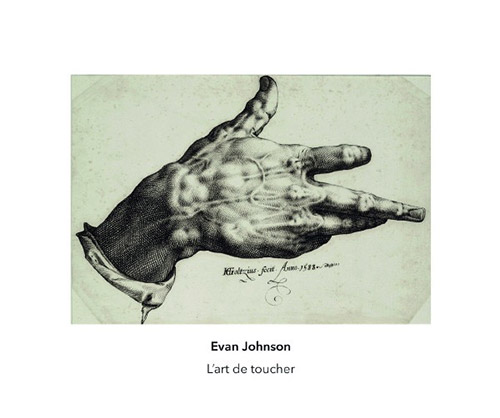
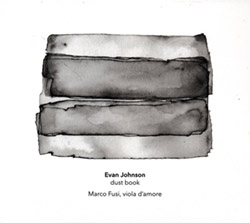
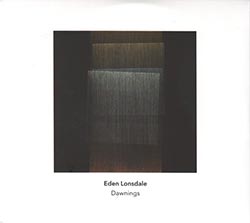





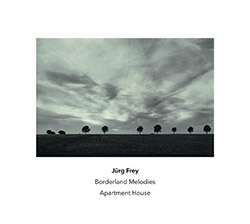






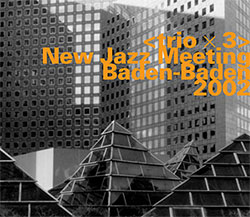
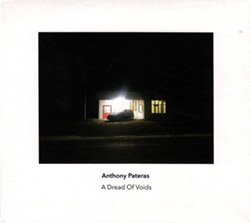
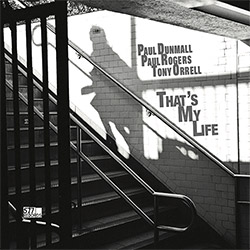
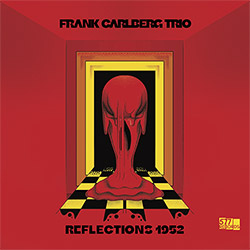
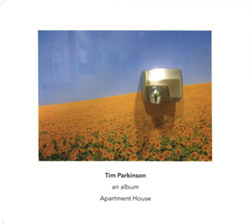
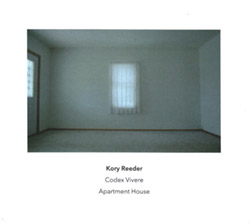
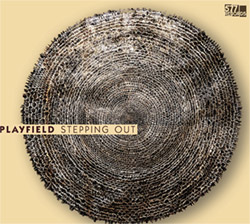


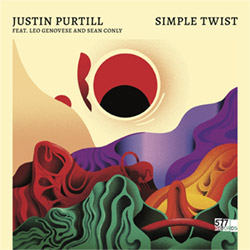
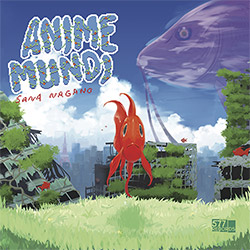







![+DOG+: The Light Of Our Lives [2 CDs]](https://www.teuthida.com/productImages/misc4/36009.jpg)


![Parker, Evan / Jean-Marc Foussat: Insolence [VINYL]](https://www.teuthida.com/productImages/misc4/36398.jpg)


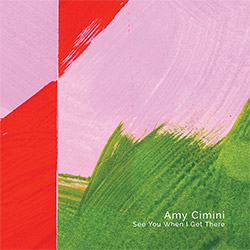





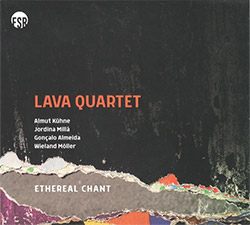
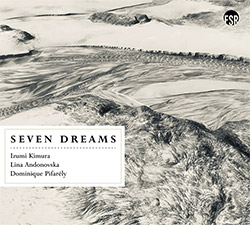
![Deupree, Jerome / Sylvie Courvoisier / Lester St. Louis / Joe Morris: Canyon [2 CDs]](https://www.teuthida.com/productImages/misc4/36404.jpg)


![Eternities: Rides Again [CASSETTE]](https://www.teuthida.com/productImages/misc4/36247.jpg)

![Lopez, Francisco: Untitled (2021-2022) [2 CDs]](https://www.teuthida.com/productImages/misc4/36438.jpg)


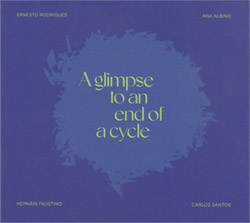

![Eventless Plot | Haarvol: The Subliminal Paths [CASSETTE + DOWNLOAD]](https://www.teuthida.com/productImages/misc4/36232.jpg)
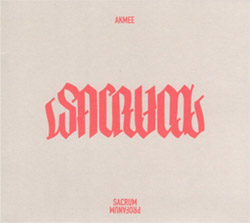


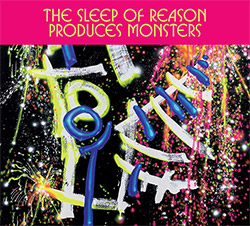



![Eventless Plot | Francesco Covarino: Methexis [CASSETTE + DOWNLOAD]](https://www.teuthida.com/productImages/misc4/36231.jpg)

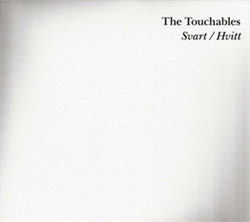

![Das B (Mazen Kerbaj / Mike Majkowski / Magda Mayas / Tony Buck): Love [VINYL]](https://www.teuthida.com/productImages/misc4/36329.jpg)
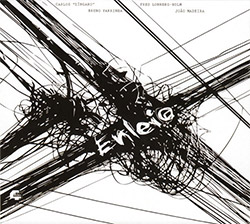

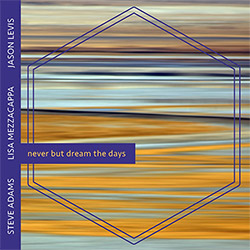
![Hemphill Stringtet, The: Plays the Music of Julius Hemphill [VINYL]](https://www.teuthida.com/productImages/misc4/36409.jpg)


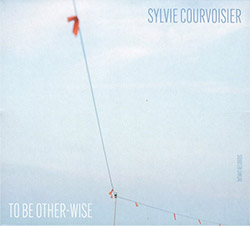


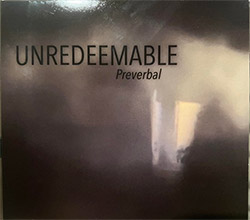
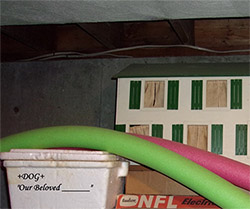
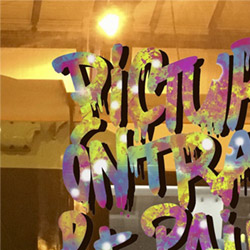

![Money : Money 2 [2 CDs]](https://www.teuthida.com/productImages/misc4/35894.jpg)
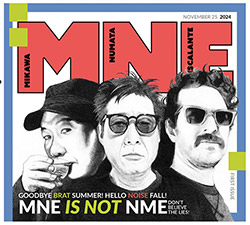
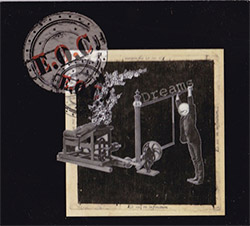


![Klinga, Erik: Elusive Shimmer [VINYL]](https://www.teuthida.com/productImages/misc4/36258.jpg)
![CHANGES TO blind (Phil Zampino): Volume 9 - I Wave on a Fine Vile Mist [CD + DOWNLOAD]](https://www.teuthida.com/productImages/misc4/36061.jpg)

![Wallmart / Rubbish: Asset Protection [split CD]](https://www.teuthida.com/productImages/misc4/35900.jpg)


![+Dog+: The Family Music Book Vol. 5 [2 CDs]](https://www.teuthida.com/productImages/misc4/35897.jpg)
![Kuvveti, Deli : Kuslar Soyledi [CASSETTE w/ DOWNLOAD]](https://www.teuthida.com/productImages/misc4/36107.jpg)
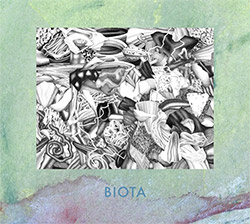
![Nakayama, Tetsuya: Edo Wan [CASSETTE w/ DOWNLOAD]](https://www.teuthida.com/productImages/misc4/36105.jpg)

![Brown, Dan / Dan Reynolds: Live At The Grange Hall [unauthorized][CASSETTE]](https://www.teuthida.com/productImages/misc4/36245.jpg)





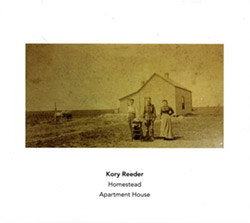
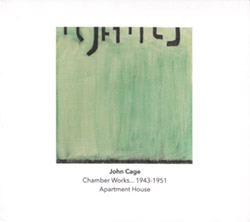
![Palestine, Charlemagne / Seppe Gebruers: Beyondddddd The Notessssss [VINYL]](https://www.teuthida.com/productImages/misc4/36206.jpg)
![Palestine, Charlemagne / Seppe Gebruers: Beyondddddd The Notessssss [NEON GREEN VINYL]](https://www.teuthida.com/productImages/misc4/36207.jpg)

![Laubrock, Ingrid: Purposing The Air [2 CDs]](https://www.teuthida.com/productImages/misc4/35639.jpg)
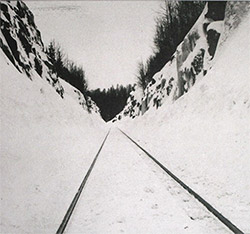
![Yoko, Ono / The Great Learning Orchestra: Selected Recordings From Grapefruit [2 CDs]](https://www.teuthida.com/productImages/misc4/35841.jpg)








![Zorn, John / JACK Quartet: The Complete String Quartets [2 CDs]](https://www.teuthida.com/productImages/misc4/35609.jpg)




![Sorry For Laughing (G. Whitlow / M. Bates / Dave-Id / E. Ka-Spel): Rain Flowers [2 CDS]](https://www.teuthida.com/productImages/misc4/35985.jpg)

![Rolando, Tommaso / Andy Moor : Biscotti [CASSETTE w/ DOWNLOADS]](https://www.teuthida.com/productImages/misc4/36106.jpg)


![Electric Bird Noise / Derek Roddy: 8-10-22 [CD EP]](https://www.teuthida.com/productImages/misc4/35970.jpg)








![Elephant9 : Mythical River [VINYL]](https://www.teuthida.com/productImages/misc4/34624.jpg)



![Elephant9 with Terje Rypdal: Catching Fire [VINYL 2 LPs]](https://www.teuthida.com/productImages/misc4/35355.jpg)
![Deerlady (Obomsawin, Mali / Magdalena Abrego): Greatest Hits [VINYL]](https://www.teuthida.com/productImages/misc4/34876.jpg)







![Surplus 1980: Illusion of Consistency [CD]](https://www.teuthida.com/productImages/misc4/35069.jpg)
![Staiano, Moe: Away Towards the Light [VINYL + DOWNLOAD]](https://www.teuthida.com/productImages/misc4/35037.jpg)
![Coley, Byron: Dating Tips for Touring Bands [VINYL]](https://www.teuthida.com/productImages/misc4/17906.jpg)

![Lost Kisses: My Life is Sad & Funny [DVD]](https://www.teuthida.com/productImages/misc4/lostKissesDVD.jpg)